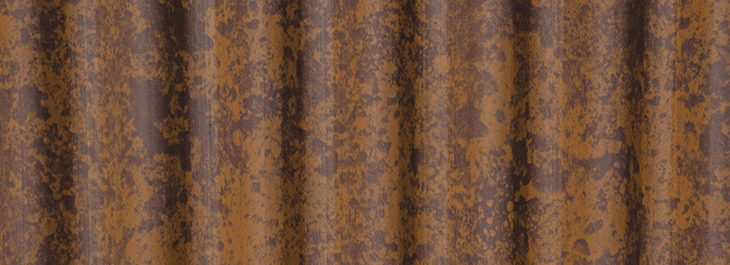
Take a damp cloth to remove the toilet cleaner and steel wool from the sheets. Leave the toilet cleaner on the sheet overnight, as well as the wet steel wool. Leave for 24-hours- less if it’s a sunny day.Place the wet steel wool on the metal sheet at random areas and let it dry.Pour some toilet cleaner on a section of the steel wool.If you want to add some dark spots on the metal sheets, here is what you need to do: The more toilet cleaner that you use, the better the result. Take the toilet cleaner and start applying it to the sheets (rub it in) with the old towel. Make sure to scrub/sand all of the sheets in their entirety. Gear yourself with protective gloves and use steel wool, sandpaper, or other abrasives to achieve this objective. Unsure why toilet cleaner will work in making a steel sheet rust? It is because most toilet cleaner products, even the one’s without the harmful chemicals, contain:Īgain, the most crucial action to be undertaken is to rid your metal sheets of the protective zinc layer.
#Rust roofs how to
How To Rust A Galvanized Roof Using Toilet CleanerĪnother item that should be in your cleaning cabinet already is the good old toilet cleaner. Allow it to dry, usually 4-12 hours, and affix the “new” sheets to your home or outdoor structure. Spray the acrylic sealer on each sheet and make sure to cover every single one entirely, as this layer will preserve the rust. It is recommended that you apply an acrylic sealer to protect your handy work from corrosion that will impact the roof’s primary function : to keep the elements out of your home or structure. Continue to apply vinegar until you are happy with the result. Leave the sheets for 24-hours to see the effect of your handiwork. If you’re not entirely satisfied with your science experiment, then repeat the whole process, from the abrasive part to the vinegar application. To ensure the best rust results, you may have to repeat this process a couple of times, as the vinegar will dry relatively quickly. If you do not find a spray bottle, you can dip paper towels in vinegar and manually cover the metal sheets with the vinegar application. The vinegar will immediately start the oxidation process when applied. Spray vinegar over the entire metal sheet. The first task at hand is to take the steel wool, sandpaper, or any abrasive and start scrubbing and sanding, removing the protective zinc layer as your primary objective. Indeed, vinegar contains elements that will rust your roof sheets fast: You may be wondering if simple vinegar will rust your shiny zinc-protected galvanized metal sheets? Vinegar can be found in most kitchens, as it is a widely used ingredient in cooking, and you should have a bottle in your pantry.

How To Rust A Galvanized Roof Using Vinegar I will give you a moment to put your science hat on and then guide you in how to make metal rust with easy to find rust-activators in your home or chemical store: 1. Exposing the metal underneath will allow you to activate the rusting process when mixing water, chemicals, and oxygen before applying it to your sheets. 4 Easy Ways To Rust A Galvanized Roof The common denominator when rusting a galvanized roof, using any of the ways listed below, is to remove the protective zinc layer on the metal sheets. Whatever the reason, people purposely rust their galvanized metal roofs, gates, and ornaments, either before installing them or when it’s already a functioning piece of their home. Others are forced to do it when their home’s design is in the rustic/vintage fashion for the roof to “fit” in with its surroundings.

Other reason s are that people like the vintage look-an element of something that battled through time- but remains and functions. One of the reasons to purposefully rust a galvanized metal roof is to create a rustic/country-style look that’s fitting to represent country life. Why Do People Rust Their Galvanized Roofs? It’s the process of dipping the metal sheets in a bath of molten hot zinc. The most common method used in galvanizing is hot-dip galvanizing. The zinc coat acts as a shield and protects the steel from moisture and oxygen, two elements needed for the rusting process to start and protect the steel or iron sheet from corrosion.

Manufacturers have implemented the act of adding a zinc coat to the steel sheets (galvanizing) to help prevent the sheets from rusting. When oxygen and water come into contact with iron, it forms a combination called iron oxide which will cause your metal steel roof to start rusting. Ungalvanized steel metal sheets will rust as they contain iron. Steel metal sheets are the most affordable of the lot, and they have an expected lifespan of up to 30 years and more. Steel, copper, aluminum, and tin are usually used in sheets for roofing.


 0 kommentar(er)
0 kommentar(er)
